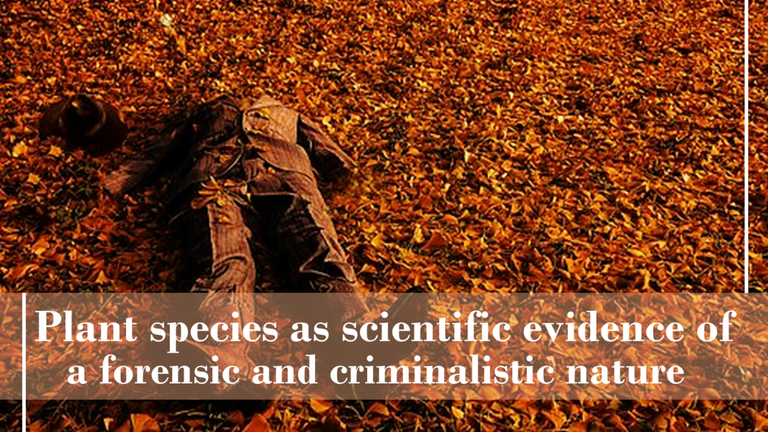
There is no doubt that plant species exhibit infinite practical utility, this time I wanted to refresh the entry and share with users of the platform #Hive especially as members of the community #STEMsocial, linking plant species with the procedures for collection, analysis and presentation of evidence in scientific investigations of forensic and criminal investigations. As in previous editions, the post is presented in a clear and accessible way, without renouncing the methodical rigor of the article, in the search to improve the understanding of the subject in specialist and non-specialist botanical users.
Introduction
Plant species are essential for the existence of life, since they offer organographic structures rich in food substances, are a source of pharmacological, forestry and industrial raw materials, however, they are also characterized by providing information of technical relevance in the field of forensics and criminal profile investigations [1].
In this last instance, the value of plant species in a criminal investigation allows field professionals to use plants, organs, vegetative and reproductive segments within the analysis of the crime scene itself, by linking the recognition of botanical evidence and its relationship with the environment, vital elements for clarifying complex situations within this type of investigation.
Now, considering that there are few trained botanists who can help solve criminal cases that demand the use of plant species in field and forensic investigations, the objective of this post is to describe and conceptualize the botanical sub-areas related to plant evidence of forensic and criminal importance.
Conceptual Overview
Forensic Botany
Forensic botany is the area of botany that offers anatomical, histological, dendrochronological, ecological, molecular, palynological, and limnological information, which prescribes usefulness as evidence within the techniques of forensic and criminalistic investigations.
It is important to mention that this discipline of botany is relatively new both on a national and international scale, the famous kidnapping and murder of the son of Charles and Anne Morrow Lindbergh in 1935 being the first legal case where botanical information was accepted as promising evidence for the resolution of a crime [2].
According to the biologist and researcher Jaffet M. Nassar, assigned to the area of ecology of the Venezuelan Institute of Scientific Research (Instituto Venezolano de Investigaciones Científicas), "the evidence that finally allowed incriminating the main suspect of this crime was a wooden staircase left in the Lindbergh house. A wood anatomy expert, Arthur Koehler, was able to identify four species of wood trees used in the construction of the staircase and detected an exact match between marks present in the wood and marks found on planks in the suspect's possession. The botanist's testimony set an important precedent for the admission of botanical evidence in other cases from that year onward in the United States.
Sub-areas of forensic application botany
Plant Anatomy and Histology
The study of the structures and external and internal organographic characteristics of plants is used in forensic botany to characterize and relate plant specimens to the places, or sites where the death or murder of one or more people occurred.
Molecular Biology
To determine the genetic specificity of the plant species or specimens found at the crime scene or victim's body, molecular biology is often used to identify the morphological features and DNA of the specimen.
Dendrochronology
Determining the age of the trees, by means of the growth rings or any alteration that may occur in the stem, is a tool that has been used in forensic botany, to help identify the pieces of wood, making them coincide with the scene of the crime.
Plant Ecology
Plant ecology studies how plants interact with their environment, therefore, it is used as a tool to locate clandestine tombs, allowing to determine if a certain site shows stages of succession different from the surrounding area, taking as an indication of a possible burial site.
Palynology
In forensic botany, the detailed study of pollen grains in angiosperms and fern spores provides associative evidence, which can greatly help to find the place of death, decomposition and time of year.
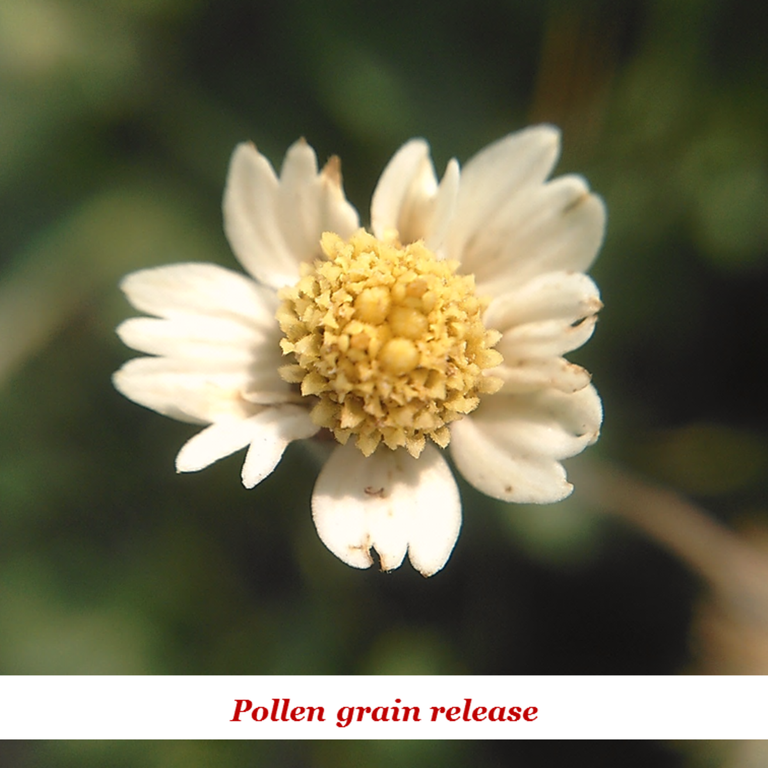
Fig. 2 Flowers in full bloom of pollen grains that serve as botanical evidence in the forensic and criminalistic sciences to associate death or murder sites. Author: @lupafilotaxia.
Limnology
Seasonal variation and diversity of unicellular algae is a sub-area of botany that is used in forensic investigations to profile time and compare specimens collected from body tissues to aid in the diagnosis of drowning and in the estimation of post-mortem interval.
Botanical evidence and forensic significance
The process for the clarification of a crime, where there is botanical evidence, is to ensure the collection and preservation of organographic structures, vegetative and reproductive segments found at the crime scene, which serve as support during forensic investigations aimed at providing answers to the causes that have led to death by suicide, or murder of a person.
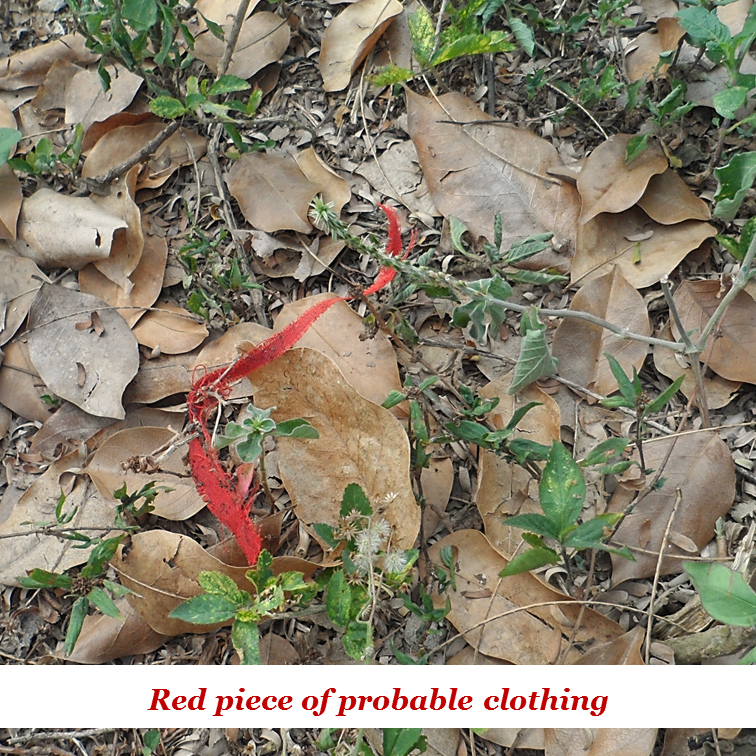
Fig. 3 It is observed area with red piece of probable clothing, serves as evidence to associate people who frequented the site where a murder was committed. Author: @lupafilotaxia.
Plant communities
The most common practice that killers carry out after taking a person's life is to bury the body in wooded areas, parks, riverbanks, and backyards, among others. However, digging and burying a body affects the micro-ecosystem of the plant, because drowning alters the mechanical structure of the soil and the decomposition of the body breaks the balance of nutrients. Hence, the composition of plant communities is used as botanical evidence for the elucidation of this type of modus operandi. For this reason, when experts in criminalistics go to areas where one or more people are presumed to have been buried, they usually analyze the dynamic patterns of plant growth and development, and identify the area where the skeleton lies.
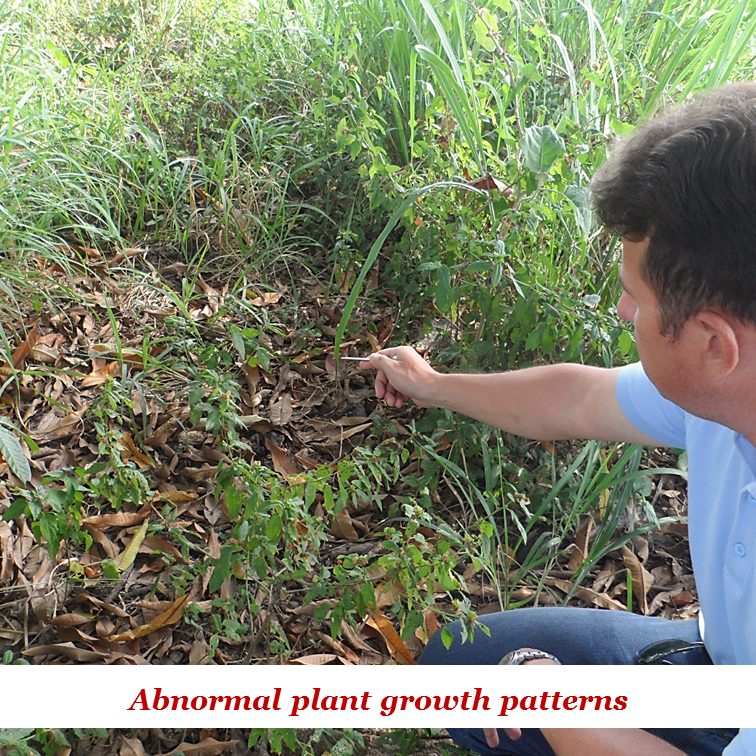
Fig. 4. Area where a man was found dismembered and buried in forest segments in Santa Bárbara del Zulia - Venezuela. Author: @lupafilotaxia.
Plant fragments and substances in the stomach
The analysis of stomach contents is a technique rarely used in criminal investigations, but is now recognized as a valuable source of information, because, since the introduction of forensic botany as an analysis tool, illustrative scenarios are allowed, which help clarify relevant points, focusing on the identification of ingested food, phytotoxic substances, psychoactive substances, movements, actions and places frequented by the victim hours before his death, such as restaurants, grocery stores, liquor stores, areas where drugs are distributed, discos and others.
Biogeographic and ecological contexts
Another common practice, perpetrated by unscrupulous people is to kill by throwing people from ravines, hills and mountain slopes, an action that provides enough information to field investigators and forensic professionals, to analyze traces and botanical deformations of the site where the crime occurred, determine the phases of the fall, as well as the dynamics of death by relating the blows and fractures in the body of the victim.
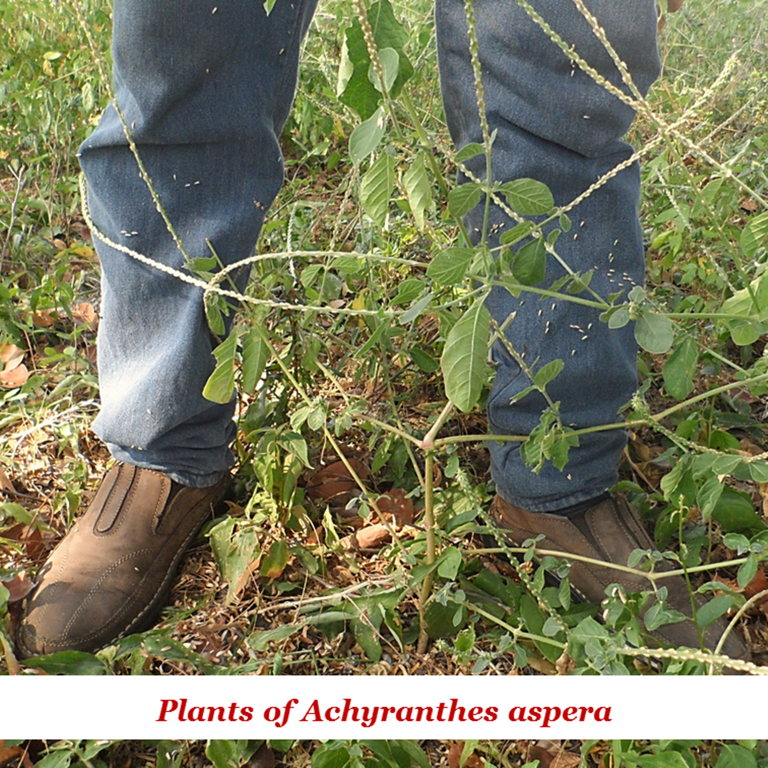
Fig. 5 Area with mouse tail seedlings observed (Achyranthes aspera). Author: @lupafilotaxia.
Similarly, after the murder has been consummated in a specific area and with the intention of misleading the criminal authorities, these people act by moving the body from the site where the atrocity was initially committed, thereby erasing the context and evidence.
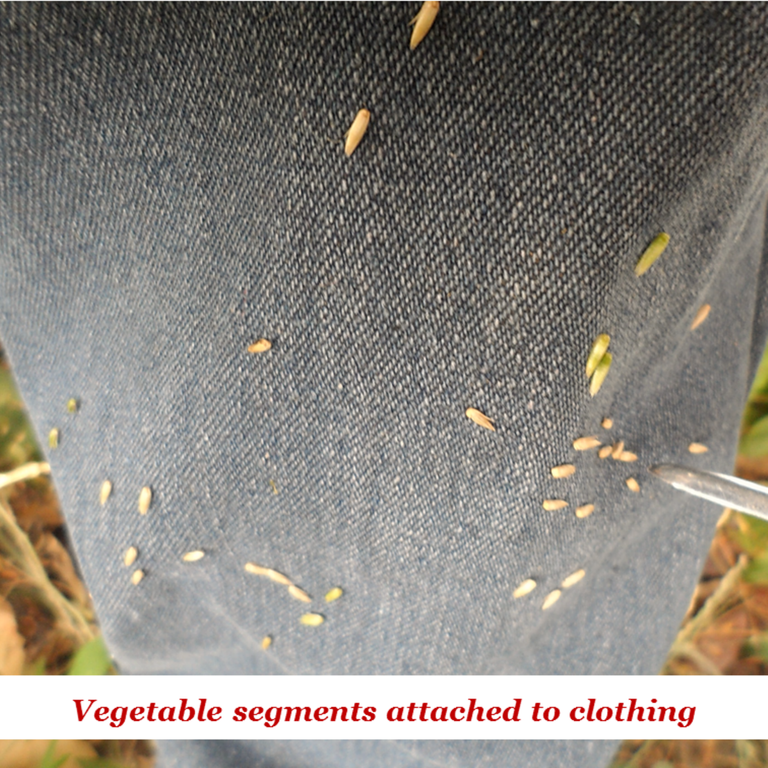
Fig. 6 Reproductive organographic segments attached to clothing, plant material are hard and spiny flowers of Achyranthes aspera,, a species used as botanical evidence in forensic and criminal sciences. Author: @lupafilotaxia.
SCIENTIFIC CONTRIBUTIONS OF THIS PUBLICATION
- The technical descriptions related to the practical usefulness of plant species as scientific evidence of a forensic and criminalistic nature, highlight the main sub-areas of botany that provide useful information to clarify crimes and suicides that have occurred in complex scenes. In the next installments related to this botanical approach, I will present in detail reported cases, outlining the investigation process undertaken for their resolution.
BIBLIOGRAPHICAL REFERENCES CONSULTED AND CITED:
[1] Ferri G., Alù M., Corradini B., and Beduschi G. Forensic botany: Species identification of botanical trace evidence using a multigene barcoding approach. Int J Legal Med. 2009; 123: 395–401. Article: Online access
[2] Jafet M. La Botánica como herramienta de la investigación criminal. Centro de Ecología del Instituto Venezolano de Investigaciones Científicas. S/F. Article: Online access
[3] Heather M., Cheng-Lung L., Wen-Yu L., Henry C., and Timothy M. Forensic Botany: Using Plant Evidence to Aid in Forensic Death Investigation. Croat Med J. 2005; 46; 4: 606-612. Article: Online access
[4] Fernández J., Galindo B., y Idrobo M. Las plantas como evidencia legal. Desarrollo de la Botánica Forense en Colombia. Rev. Acad. Colomb. Cienc. 2007; 31; 119: 181-198. Article: Online access
[5] Martínez M., Fernández S., y Carrión J. Palinología y escenario forense. Un caso de estudio del sureste de España. Anales de Biología. 2008; 30: 43-54. Article: Online access
ATTENTION
Readers and followers
If you wish to read more scientific articles in English or Spanish, of excellent academic quality, do not hesitate to visit #STEMSocial and #STEM-espanol, communities that promote scientific content mainly in the areas of Science, Technology, Engineering and Mathematics.
OBSERVATION
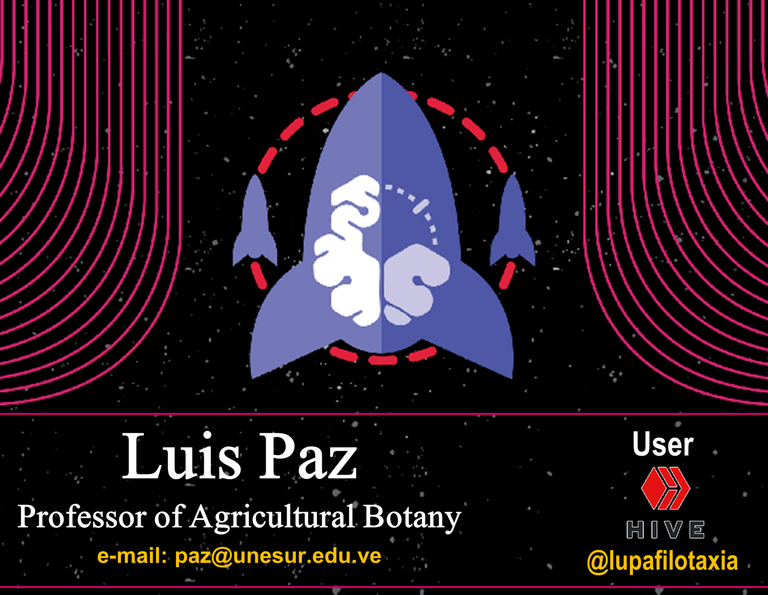
#Posh Twitter:
Greetings dear friend @lupafilotaxia, excellent material that you share, you demonstrate the utility of botany in other areas, it seems to me a very methodical work and with much dedication, if I am not mistaken the specialists in entomology also have a place in this type of investigations, since, depending on the type of insects found in the corpse they manage to identify the possible zone where the murder could have occurred.
See you later, have an excellent week, blessings for all your family!
@amestyj thank you for the blessings to the family, which I also gladly receive and replicate for your home.
Right, not only entomology, the multiple disciplines of biology, facilitate contexts that serve as clues to clarify through forensic techniques some murders, and in what ecological context they were committed. Returning to the point of the usefulness of plants, the factors that influence the biology of each plant species can be used within the general principles for the presentation and preservation of criminalistic evidence.
I have never come across this kind of topic using plant species for forensic analysis in a crime scene. All I have ever read and heard about is a forensic analysis using bloodstain and maybe some other object found at the crime scene. But this new field in botany will really help in solving homicide committed inside forest or wooden apartment. I learnt a new thing today @lupafilotaxia.
Right basically those are the two most used approaches, homicides committed in forests or green spaces, where it is presumed they could bury the victim, because the plant community is notably different, and regarding the wooden apartments, precisely the first case reported and clarified was using the wood as evidence.
Cordial greetings @steep2308, thanks for visiting the blog, we continue reading.
This is one area I would have loved to specialise in as a Botanist. Unfortunately, this branch of botany is quite alien to the university I graduated from and to Nigeria generally. I still wouldn't mind going all out for it. Thanks for this education.
Greetings friend @gentleshaid, I hope you are well, health above all. That's right, the whole theoretical-practical scenario related to forensic botany, is an area that makes you want to approach it professionally. I am glad to hear from you again. Kind regards, we continue reading each other.
Excellent divulgation scientific article about a little known area but of great interest because of its implications in today's life. Greetings, @lupafilotaxia.
Greetings friend @josemalavem.
First I must thank you for your kind visit to the blog. That's right, forensic botany is an area that has not been addressed much, perhaps the technical, police and investigative implications involved are not of the utmost interest to plant biology professionals, who see botany from another perspective and with a greater connection to nature. Kind regards, we continue reading.
Thanks for your contribution to the STEMsocial community. Feel free to join us on discord to get to know the rest of us!
Please consider supporting our funding proposal, approving our witness (@stem.witness) or delegating to the @stemsocial account (for some ROI).
Thanks for using the STEMsocial app and including @stemsocial as a beneficiary, which give you stronger support.